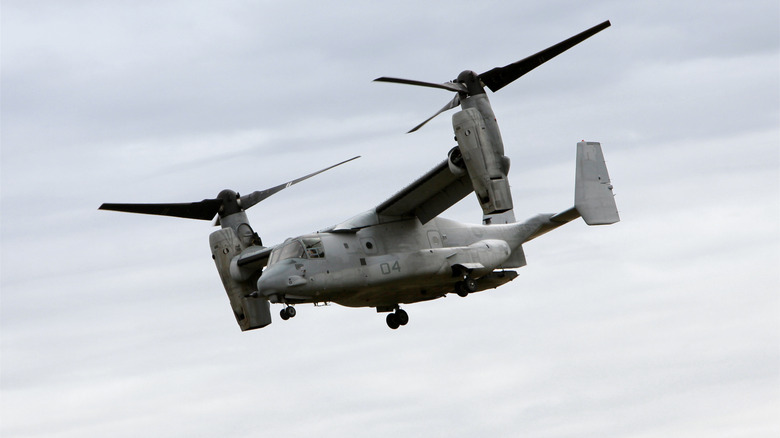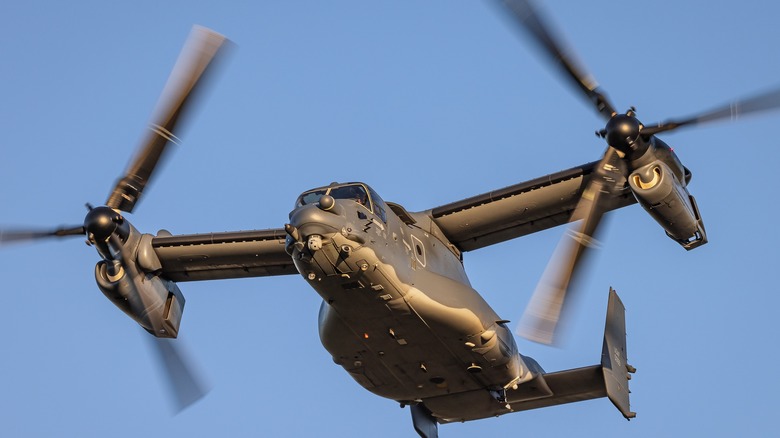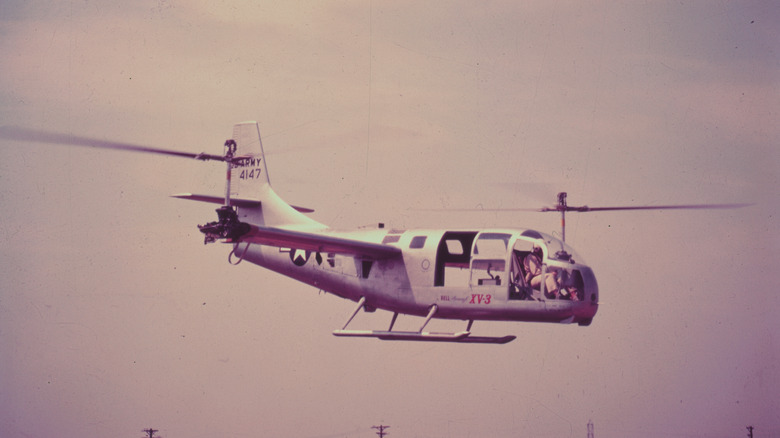What Are Tiltrotor Aircraft, And How Do They Fly?
Have you ever heard of the "VTOL" flight concept? VTOL is an acronym that stands for "vertical take-off and landing." Basically, aircraft with VTOL capabilities can take off vertically from a standing position, transition to standard forward propulsion, and then transition back to a vertical mode for a safe landing. Aeronautic engineers have been tinkering with the concept of VTOLs for decades, mostly for military purposes, as a high-speed aircraft that doesn't need space for a runway solves a host of operational issues.
The ideal form of a VTOL would be something powered by a jet engine like the legendary Harrier jump jet, but that doesn't mean that's the only form such a vehicle could take. For instance, what kind of aircraft do you think of when you think of vertical takeoffs? A helicopter, right? Well, what if a helicopter could turn its rotors sideways to generate greater forward thrust? It's not science fiction; it's a tiltrotor aircraft, and it's quite real.
How do tiltrotor aircraft work?
The basic concept behind tiltrotor aircraft is rather ingenious in its simplicity. Rather than a single, stationary rotor, as you'd see on a typical helicopter, tiltrotors use a pair of rotors mounted on both sides of the vehicle, both of which are placed on a swiveling joint. While on the ground and taking off, the rotors are positioned vertically to generate the necessary upward lift.
Once the vehicle is safely in the sky and moving forward, the rotors then swivel down to their horizontal configuration, switching from vertical lift to horizontal torque. In other words, the rotors tilt — it's all right there in the name. Think of it as a helicopter transforming into a biplane, shifting its energy generation from pushing it off the ground to propelling it forward.
By carefully adjusting the tilting rotors, operators of this kind of vehicle could use it for all kinds of practical purposes, including transporting cargo, search-and-rescue, and troop transport. That's one of the reasons it's so attractive to military organizations — if all aircraft could land without the use of a runway, it would greatly increase operational possibilities and save space.
Prominent tiltrotor aircraft
Aeronautic companies have worked on tiltrotor aircraft for decades, trying to strike the perfect balance between hovering and speedy flight. One of the first tiltrotor aircraft developed here in the United States was the Textron XV-3, created by Bell Aircraft in 1951. This early tiltrotor served as a fairly convincing proof of concept, with the second XV-3 prototype successfully maintaining a hovering state after a vertical takeoff and then transitioning to full horizontal flight. This vehicle was not mass-produced, but it was proof positive that the notion was fully workable.
One of the most prominent examples of tiltrotor aircraft was the V-22 Osprey, developed by Bell Boeing. This military-grade beast took its first flight in 1989 and featured a pair of massive three-blade rotors, rotating in opposite directions to keep the vehicle stable in flight. In a smooth, 12-second transformation, the Osprey can shift from helicopter mode to airplane mode, flying up to 315 mph at its peak performance. The Osprey has been used by all three branches of the U.S. military, primarily for reconnaissance, troop and cargo transport, and water rescues.
Since it's been fairly definitively proven that tiltrotor aircraft work well in military settings, private companies have been researching new and interesting ways to bring the vehicles to the people. As of 2024, one of the most interesting ongoing projects is the Joby Aviation eVTOL, a next-generation aircraft powered by six tilting rotors for unprecedented muscle and speed, not to mention surprisingly quiet operation.


